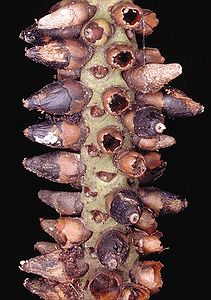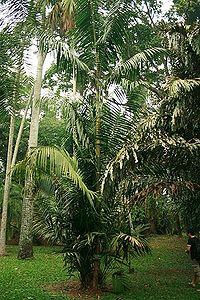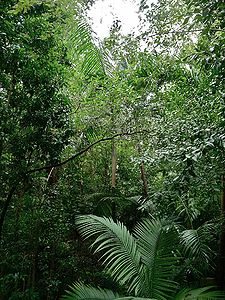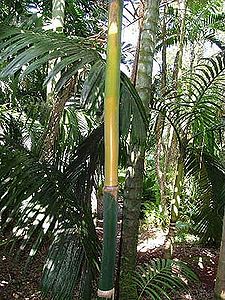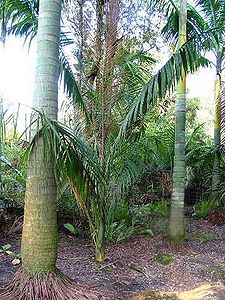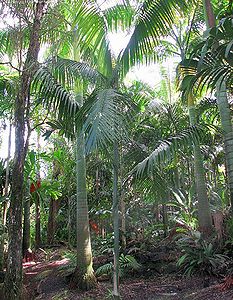Difference between revisions of "Cyrtostachys loriae"
| Line 60: | Line 60: | ||
image:Csyrtotachys_glauca00.jpg | image:Csyrtotachys_glauca00.jpg | ||
image:2008-11-01_09-34-28.jpg|Photo by Ryan D. Gallivan, edric. | image:2008-11-01_09-34-28.jpg|Photo by Ryan D. Gallivan, edric. | ||
| − | image: | + | image:Chalerz.jpg|Thailand. Photo by Chalermchart Soorangura, edric. |
image:6295503025_263381a07d_o.jpg | image:6295503025_263381a07d_o.jpg | ||
| − | image:C. | + | image:C._elegans3z.jpg |
| − | image:C. | + | image:C._loriae2z.jpg |
image:Cyrtostachys_loriaejodyhaynes.jpg|Photo by Jody Haynes, edric. | image:Cyrtostachys_loriaejodyhaynes.jpg|Photo by Jody Haynes, edric. | ||
| − | image: | + | image:D41e96z.jpg |
image: | image: | ||
image: | image: | ||
Revision as of 00:56, 2 June 2013
<google>CH02</google>
| Cytostachys (sihr-toh-STAHK-iss) loriae (LOR-ee-eh) | |||||||
|---|---|---|---|---|---|---|---|
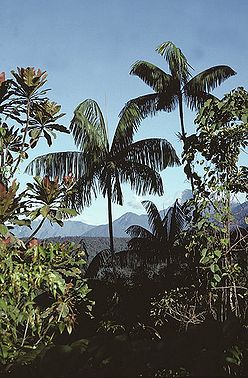 Irian Jaya, Papua, Indonesia. Photo by Dr. William J. Baker, edric. | |||||||
| Scientific Classification | |||||||
| |||||||
| Synonyms | |||||||
|
| |||||||
| Native Continent | |||||||
|
| |||||||
| Morphology | |||||||
| |||||||
| Culture | |||||||
|
| |||||||
| Survivability index | |||||||
|
| |||||||
| Common names | |||||||
|
| |||||||
Contents
Habitat and Distribution
Endemic to Bismarck Archipelago, New Guinea, and the Solomon Islands, Cyrtostachys loriae is a widespread species, in the Papuasian region, distributed from Kepala Burung (Bird Head’s Peninsula) in the west, to Solomon Islands in the east. widespread in lowland swamp and rainforest, lower montane heath forests, and tropical savannas, from the Bird's Head Peninsula of New Guinea, eastward to the Solomon Islands to 400 m. (1300 ft.).
Description
It has a smooth trunk, and can can grow to a hight 100 ft. tall and reach 12 in. in diameter. The spherical crown is held by a yellowish to light green crownshaft. The large leathery leaves, are whitish below and have practically no leaf stalks.
Robust, solitary palm to 10 – 30 m. Stem 11.5 – 30 cm in diam., brownish-grey to whitish below and green to olive-green above, nodal scars conspicuous, internodes 3 – 30 cm long, crown hemispherical in outline. Leaves 8 – 14 per crown, leaves spreading, 250 – 480 cm long (including petiole); sheath tubular, 112.5 – 180 cm long, 25 – 68 cm wide, forming distinct crownshaft, 125 – 200 cm long, pale yellow to light green; petiole almost missing to short (1 – 10 cm long), 3 – 5.5 cm wide and 1 – 2.8 cm thick at the base, with thin or thick brown to whitish-purple lepidote indumentum; rachis with similar indumentum as the petiole; leaflets regularly arranged, leathery, 76 – 189 leaflets on each side, middle leaflets 80 – 152 × 3.4 – 6.8 cm, apical leaflets 14 – 50 × 0.8 – 2 cm, briefly pointed and sometimes notched at apices, green, discolorous when dried, glaucous adaxially, glaucous to whitish abaxially, fine brown ramenta discontinuous along mid-vein on abaxial surface. Inflorescence infrafoliar, strongly divaricate, 43 – 150 cm long, up to 250 cm wide, branched to 3 orders, green to pale yellow, light brown to black when dried; peduncle very short to 10 cm; rachillae 25 – 88.5 cm long; 6 – 9 mm in diam., brown to rusty brown, calyx persistent after fruits fallen; 8 – 16 pits per 1 cm rachilla length (in various stages), pits 2 – 6 mm in diam., deep. Staminate flowers 2.5 – 4 × 2 – 3 mm; sepals 1.2 – 2.2 × 1.5 – 2.9 mm; petals 2 – 3 × 1.2 – 2.5 mm; stamens 9 – 13; filaments 0.7 – 3.5 × 0.1 – 0.2 mm; anthers 1 – 1.5 × 0.5 – 0.8 mm; pollen size, long axis 27 – 56 mm, short axis 25 – 48 mm, proximal wall thickness 1.5 – 5 mm, distal wall thickness 1 – 5 mm, tectum surface sparsely verrucate and gemmate, trichotomosulcate grains present; pistillode 0.7 – 1.7 × 0.2 – 1 (1 – 1.5 at the base) mm. Pistillate flowers 2 – 6 × 2.2 – 5.5 mm; sepals 2.5 – 5.2 × 2.1 – 6.2 mm; petals 1.5 – 5.2 × 1 – 5 mm; gynoecium 1 – 5 × 0.5 – 3.5 mm (including 3 recurved stigmas); staminodes triangular (3 – 4) to circular, membranous. Fruits 8 – 16 × 4 – 5 mm, ellipsoid to sickle-shaped, green to black; beak 0 – 2 mmlong. Seeds 5 – 8 × 2 – 5 × 2 – 5 mm, ellipsoid to ovoid, rounded apically and flattened basally. Editing by edric. (Ch.D. Heatubun. 2009)
Cyrtostachys loriae, was the first species of the genus to be published from the Papuasian region. This palm is easily distinguished by its solitary and robust habit, spherical crown, pendulous pinnae, very short (– 10 cm. long), and almost non-existent petiole, and an inflorescence more robust than in other species, branched to 3 orders, with robust rachillae bearing large and deep pits. Re-examination of the type specimens of Cyrtostachys brassii, C. kisu, C. loriae, C. microcarpa, C. peekeliana and C. phanerolepis, revealed no significant differences among them, except those caused by differences in developmental stages, despite the inadequate nature of the specimens. Morphological variation among them is continuous, especially after comparison with more adequate specimens from recent collections. No disjunctions in variation occur that would allow the consistent separation of six species as recognised by previous authors. The narrow species concept used in the past, reflects limited information obtained from single collections. Moore (1966) pointed out his suspicions, that the five taxa above might not be distinct; they all have a solitary habit and 12 stamens except for Cyrtostachys phanerolepis — six stamens, pits in 9 series, and larger fruits. Burret did not realise that the specimen Clemens 1353 (the type of C. phanerolepis), had been mixed with some male flowers of Licuala, and he described C. phanerolepis with staminate flowers from Licuala. Cyrtostachys loriae is the most widespread species of the genus in the Papuasian region, and also occupies a wide range of ecological conditions from swampy areas in the lowlands to heath forest in lower montane vegetation, from evergreen rain forest to dry areas in savannah lands, and from the main island of New Guinea, to small off-shore islands and the Solomons. The adaptation to various habitats is reflected in the very variable appearance, a plasticity that occurs not only in size and shape, but also the number of certain organs, such as number of stamens. In some specimens, different numbers of stamens can be found within one inflorescence, or in different collections from the same locality. There are two collections from savannah areas in Merauke, Indonesian Province of Papua, which look quite distinct in the appearance of their leaves. The petiole and rachis are covered by scaly indumentum, and the pinnae are slender with discolorous surfaces (glaucous adaxially, purplish-brown abaxially). Other characters such as habit, stem, inflorescence and flowers, fruits and seeds fit with Cyrtostachys loriae. The variation in leaf character may reflect different ecological conditions in savannah areas. (Ch.D. Heatubun. 2009)
Culture
Even though it would make a magnificent ornamental for the humid tropics, this species is little known in cultivation and only present in a handful of specialist collections. Several other Cyrtostachys have recently been reduced to synonymy with one variable Cyrtostachys loriae, namely C. brassii, C. kisu, C. microcarpa, C. peekeliana and C. phanerolepis.
Comments and Curiosities
Uses: Cyrtostachys loriae is one of the more useful species in the genus froman ethnobotanical point of view. It has been used traditionally by people native in both New Guinea and the Solomon Islands. The stems and leaves are used as building materials for traditional houses, e.g. piles, flooring, water pipes, thatch and mattresses. The palm heart or “cabbage” is also eaten fresh or cooked.
Conservation: Cyrtostachys loriae is widespread in the Papuasian region, and as yet, the conservation status of this species seems not to be a cause for concern. However, land conversion for oil palm plantations or other purposes, including illegal logging activities in West New Guinea (Indonesian Provinces of Irian Jaya Barat and Papua) could have a severe effect on the populations of the palm. Detailed population studies are still needed to assess its conservation status more precisely.
A rather large, solitary cousin of the famed Sealing Wax Palm, widespread in lowland swamp and rainforest, lower montane heath forests and tropical savanna from the Bird's Head Peninsula of New Guinea eastward to the Solomon Islands to 400 m (1300 ft.). Its smooth trunk can grow to 30 m (100 ft.) tall and reach 30 cm (12 in.) in diameter. The spherical crown is held by a yellowish to light green crownshaft. The large, leathery leaves are whitish below and have practically no leaf stalks. Even though it would make a magnificent ornamental for the humid tropics, this species is little known in cultivation and only present in a handful of specialist collections. Several other Cyrtostachys have recently been reduced to synonymy with one variable Cyrtostachys loriae, namely C. brassii, C. kisu, C. microcarpa, C. peekeliana and C. phanerolepis. (RPS.com), edric.
External Links
References
Phonetic spelling of Latin names by edric.
Special thanks to Geoff Stein, (Palmbob) for his hundreds of photos, edric.
Special thanks to palmweb.org, Dr. John Dransfield, Dr. Bill Baker & team, for their volumes of information and photos, edric.
- IMAGE GALLERY
Many Special Thanks to Ed Vaile for his long hours of tireless editing and numerous contributions.






